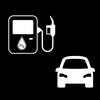Car Tips: Winter Driving Tips and Safety Tips on Wet Roads.
When the rain comes down, so does the number of car accidents. Slippery roads are more dangerous than dry ones, but that doesn't mean you have to stay off the road until the sun comes out again. With a little know-how and some extra caution, you can safely navigate wet roads.
1.Winter Driving Tips

With winter comes slick, icy roads. Driving in these conditions can be dangerous, but there are some things you can do to help keep you and your car safe.
First, take extra care when driving. Slow down and give yourself plenty of time to brake. Be extra careful on bridges and overpasses, as they tend to freeze first.
2. Keep your car in good condition. This means making sure the tires have enough tread and are properly inflated, the brakes are in good working order, the battery is strong, and the windshield wipers are in good shape.
3. Be prepared for emergencies. Keep a winter survival kit in your car including items like blankets, warm clothes, non-perishable food, water, a flashlight, and a first-aid kit.
4.Check the braking system of your car prior to winter. The brakes must work smoothly without jamming. This is very important for keeping the control of your car during winter time.
5.While driving in winter you must be aware of the conditions this weathers brings. Listen carefully to all kind of radio alerts and weather updates while driving. You do not want to get caught-up in some blinding snow-storm.
6.Drive with your car's entire lighting system turned fully on. This helps to enhance the visibility on the road substantially. Also, makes your car visible among all the vehicles which is especially important while driving on a highway/freeway.
7.During winter times the road becomes extremely slippery, meaning your car can skid dangerously if you try to accelerate carelessly. Never drive at a high speed in winter, avoid jerky steering while braking or accelerating to prevent skidding. Always drive slowly within controllable and safe posted speed limits.
8.If it's too late and you are already in a dangerous skidding situation, the best way is to step on the clutch or shift to neutral gear avoiding braking suddenly. Go in the threshold breaking instead.
Only after gaining full control should you try to steer the vehicle in the direction you want it to go.
9.Double/triple the two second rule - under normal driving conditions it is advised that you follow the 2 second rule that helps you leave adequate space between your car and the car in front of you, but in the winter you should double/triple this two-second rule.
10.Beware of black ice. These are road patches that appear black and shiny and are ideal areas where your car wheels tend to lose grip quite easily.
11.Drive slowly with your foot on the clutch or in neutral gear along with squeeze braking over these patches, and avoid accelerating at all cost.
12.Never drive when you are fatigued in winter.
13.Stock up essential food, first aid, water, warm clothing, emergency lights, torches, blankets, shovel, towropes, chains, etc. to handle emergency situations.
14.If you get struck in a snow storm, or the traffic just seems to have come to standstill due to accumulation of layers of snow, do not panic.
It is better that you remain inside your car and call for help. You can draw attention to your vehicle by holding out coloured flares, emergency flashers, flags, etc.
15.If you don't feel confident enough to drive in this conditions, you can find advanced driving courses that teach emergency winter driving skills.
2.Safety Tips On Wet Roads.

The rain might be a great danger for drivers, because the road and the rest of the driving terrains become wet and slippery. This means if you are not driving carefully and safely you may lend up to a big fatal trouble.
Slow down and allow for greater following distances. Wet roads are more slippery than dry ones, so it's important to slow down and give yourself plenty of time to brake.
Watch for hydroplaning. This happens when your tires lose contact with the road because they're riding on a layer of water. If you start to hydroplane, ease off the accelerator and don't brake suddenly.
First thing you have to keep in mind driving on wet roads is that you are actually driving on wet and maybe slippery terrain, therefore you must be on full alert and manoeuvre your car cautiously.
2.Avoid the jerky movements while braking, accelerating or turning around a corner.
3.Never drive at high speed on a wet road. Driving at a lower velocity provides you with greater stability.
4.Maintain adequate distance between the cars in front of you.
5.Again, the role of the tires is very big. Poor quality tires or poorly maintained tires are also responsible for the driver's carelessness. Please invest in high quality tires that are specifically adapted for both dry as well wet and slippery conditions.
6.If by any chance you lose control over your vehicle, do not panic. First lightly apply the brakes steering in the direction of the skid, push down the clutch and let the car slow down on its own.
7.Be extra careful on bridges and overpasses.
In conclusion,following these tips will help you stay safe when driving in wet roads and winter conditions. Always be sure to slow down and allow for extra stopping time, as well as increase your following distance. And finally, don't forget to equip your car with the proper tires and winter gear. Stay safe out there!


